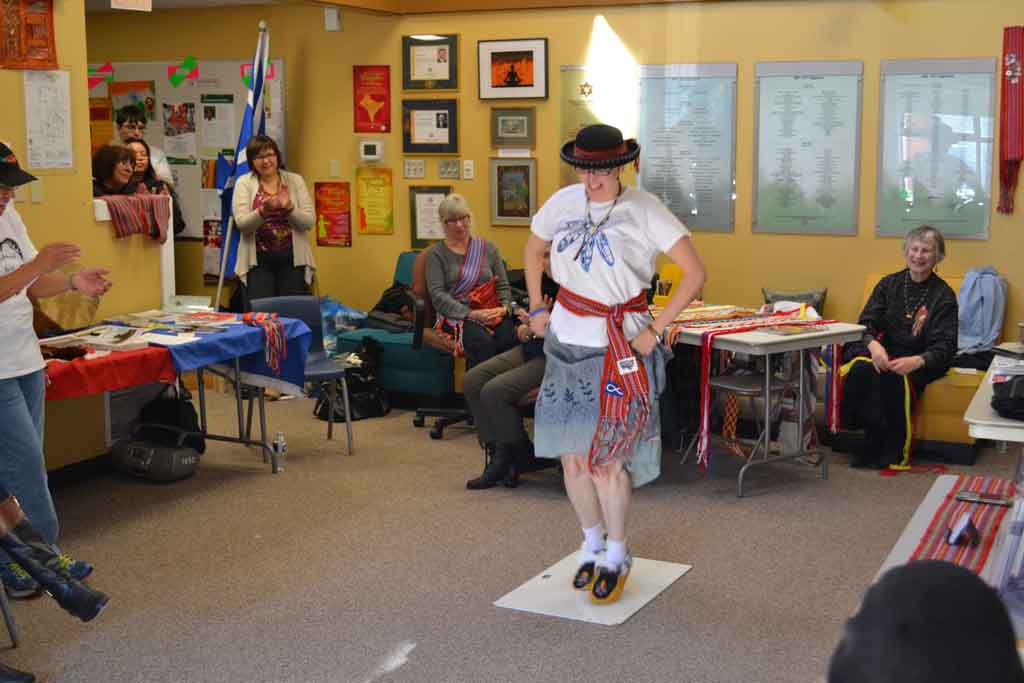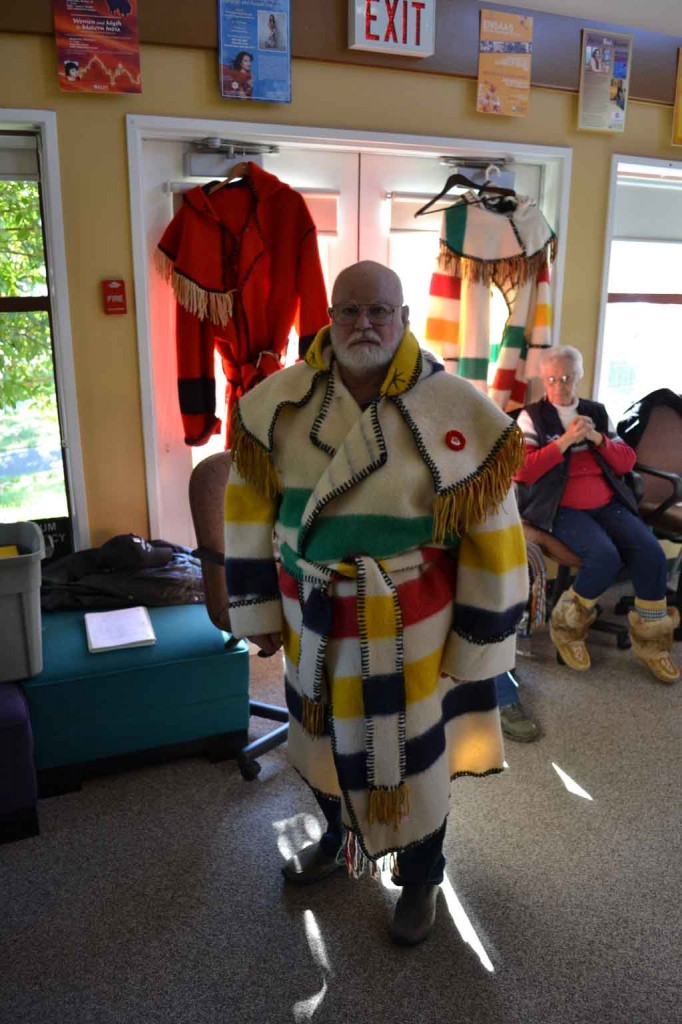By Simon Grant (Contributor/Photos) – Email
Print Edition: November 19, 2014

The Aboriginal Resource Centre for UFV held its annual Métis Awareness Day at U-House Thursday. The Métis Awareness gathering also doubled as Louis Riel Day, which is usually celebrated on November 15. Elders from Chilliwack Métis Nation and Métis Nation BC gathered to showcase several different talents of Métis tradition and to recollect the history of its unique peoples.

“It’s unique what happened in Canada, as a new people was created. It’s important to celebrate and talk about that today,” said vice provost and associate vice-president, academic Peter Geller during his introduction.
Several booths had been erected to speak about different aspects of Métis art, life, and future, and a potlatch lunch was served with traditional bannock bread and buffalo stew. Elder Joe Smith presented many different tools used in the early 1800s, as well as three rare photo reproductions of paintings depicting the three battles fought by Louis Riel’s rebellious forces during the Red River Rebellion. Métis Nation BC had two booths to illustrate their functions of identifying and registering unknown Métis and their services in giving better access to education and employment for Métis.
The elders also gave several presentations of their culture. UFV’s elder in residence T´ít´elem Spath (Eddie Gardner) sang UFV’s welcome song, donated by a previous elder to the school, to open the ceremony. Marione Gonneville (her Cree name is White Cloud Dancer) presented a unique style of dance, known as jigging, that combined the Aboriginal dancing styles of Canada with European music. She danced the traditional Red River Jig and the Belt Jig, derived from the early Scottish settlers’ highland traditional sword dance, and taught part of the dance to audience members. Jim Middleton presented Hudson Bay blankets and spoke of their significance to the Métis people. Originally known as “chief blankets,” these were originally white to act as camouflage during winter hunting; their value was denoted by embroidering black stripes into the blanket. They could also be sewn into traditional Métis overcoats called capotes.
Other aspects of the culture were celebrated during the day; the Métis flag — with its white infinity symbol representing the European and the Aboriginal meeting in the middle to form one eternal nation — was displayed for the audience.
The elders then took turns sharing their stories about the history of the Métis Nation: its origin stemming from integration of early French fur traders with Aboriginal Canadians; their search for identity; the call to self-governance in Manitoba and the subsequent Red River Rebellion; and the residential schools, recalled with bitter remarks. Still, the elders look to the future, hoping to raise awareness about the Nation, celebrate its resilient and adaptive culture, and to bring the unidentified members of its nation into its fold.


